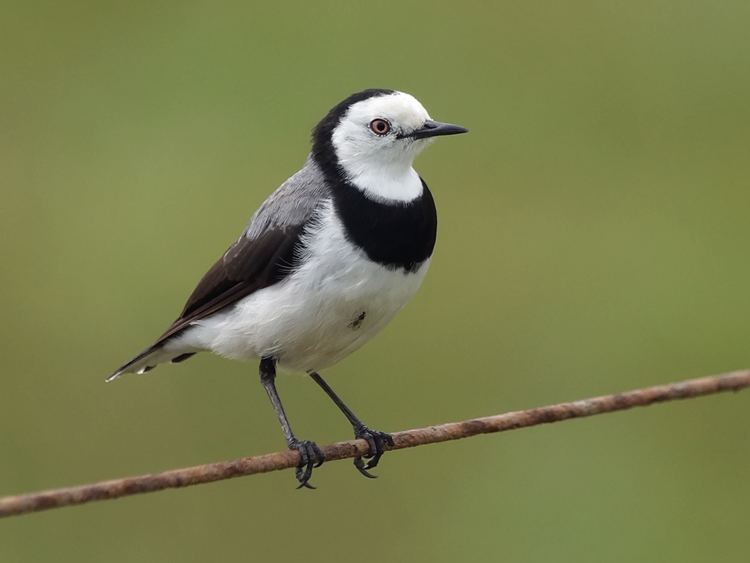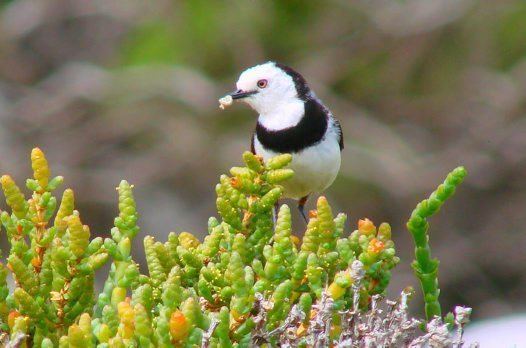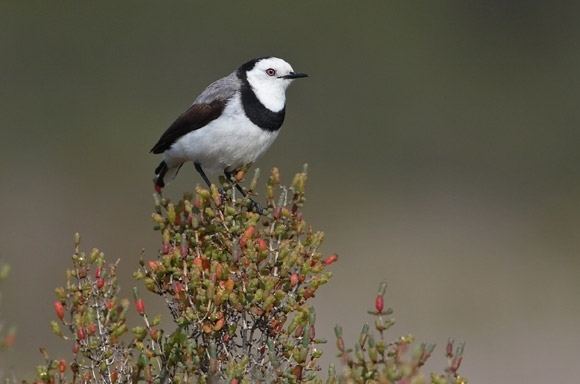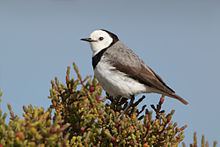Order Passeriformes Higher classification Epthianura | Phylum Chordata Family Meliphagidae Scientific name Epthianura albifrons Rank Species | |
 | ||
Similar Bird, Honeyeater, Epthianura, Dusky woodswallow, Singing honeyeater | ||
Endangered population of white fronted chats
The white-fronted chat (Epthianura albifrons) is a species of bird in the honeyeater family Meliphagidae native to southern Australia. The male has a white face bordered by a black breast band. It is insectivorous.
Contents
- Endangered population of white fronted chats
- White fronted chat lake connewarre
- Taxonomy
- Description
- Distribution and habitat
- References

White fronted chat lake connewarre
Taxonomy

Jardine and P.J.Selby described the white-fronted chat in 1828 as Acanthiza albifrons. Lesson described it in 1844 as Fluvicola leucocephala, and Brehm as Cinura torquata in 1845.

The species is monotypic; that is, no subspecies are recognised. Tasmanian birds were thought to have longer bills but this has not been borne out on further investigation.
This species has collected many vernacular names: Gould called it white-fronted epthianura in 1848, a direct translation of its Latin name, while from its distinctive call were derived the names (banded) tintack, gar, and tang, and the males' resemblance to a nun's habit led to the name (white-fronted) nun, similarly baldyhead, baldy, ringneck and singlebar come from its appearance. The derivation of others, such as clipper and tripper, is unclear.
Description

Adult white-fronted chats are 11–13 cm in length and weigh 13 g. The male has a white face and breast bordered by a black band across the breast and back. The upperparts are grey, and wings and tail are brown, and abdomen is white. The eyes are white, whereas the eyes of the female are brown. The female has brown upperparts and white underparts with a faint darker breast band.
The call, a tang sound, has been likened to the twanging of a rubber band.
Distribution and habitat

It is endemic to Australia, being found across southern Australia (including Tasmania) from Shark Bay in Western Australia around to the Queensland/New South Wales border. The white-fronted chat has been listed as vulnerable in New South Wales, and threatened in the Adelaide-Mount Lofty region of South Australia, where it has become much rarer, though is listed globally as least concern. It is generally sedentary, though may be nomadic in more arid parts of its range.
